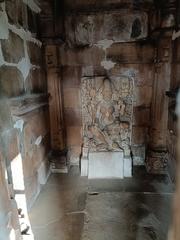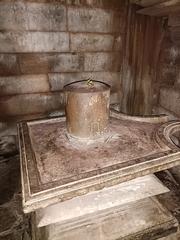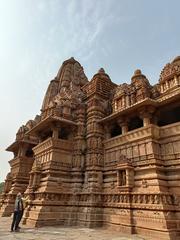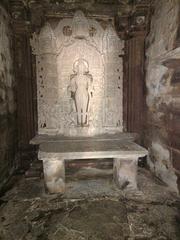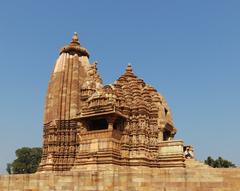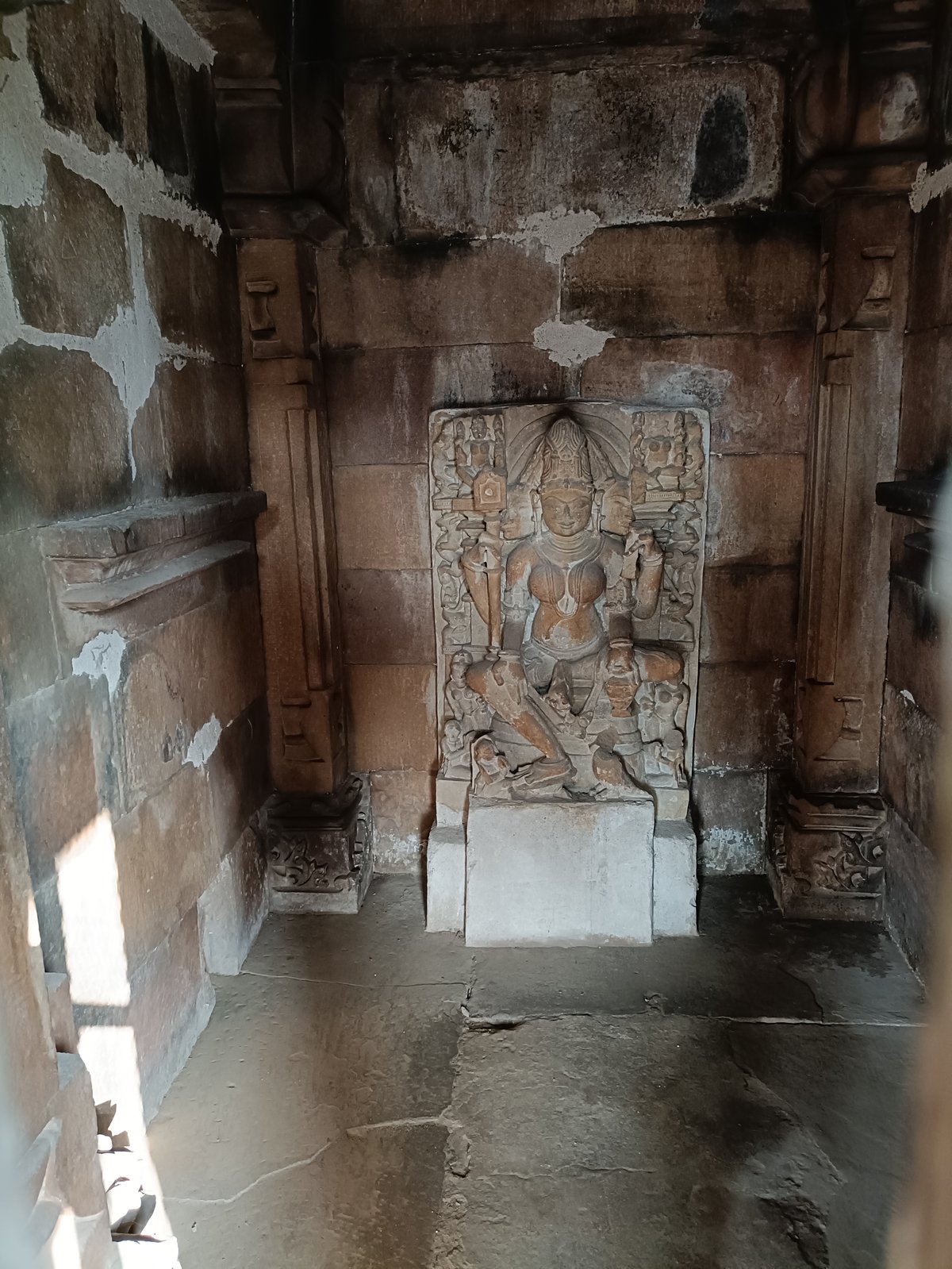
Khajuraho Group of Monuments: Visiting Hours, Tickets, and Travel Guide
Date: 14/06/2025
Introduction
Set in the heart of Madhya Pradesh, the Khajuraho Group of Monuments is a UNESCO World Heritage Site celebrated for its breathtaking Nagara-style temples and masterfully carved sandstone sculptures. Erected by the Chandela dynasty between the 10th and 12th centuries CE, this complex once boasted around 85 temples spread over 20 square kilometers; today, 20–25 remain clustered into Western, Eastern, and Southern groups. Revered for their artistic, cultural, and religious significance—spanning Hindu and Jain traditions—the temples feature soaring shikharas, intricate mandapas, and a rich sculptural program that vividly represents deities, everyday life, celestial beings, and evocative erotic imagery inspired by the Kama Sutra. Khajuraho is a living testament to India’s medieval heritage, drawing travelers, historians, and art enthusiasts from around the world (mad-traveller.com; yehaindia.com; madhya-pradesh-tourism.com).
This comprehensive guide provides everything you need to plan your visit, including historical context, visiting hours, ticketing, accessibility, nearby attractions, conservation efforts, and practical tips for a fulfilling and responsible experience.
Contents
- Introduction
- Historical Background
- The Chandela Dynasty
- Religious and Artistic Pluralism
- Visiting Khajuraho: Practical Information
- Visiting Hours & Ticketing
- Guided Tours & Visitor Tips
- Accessibility & Facilities
- Nearby Attractions & Cultural Events
- Conservation and UNESCO Status
- Highlights: Temple Groups and Notable Sites
- FAQs
- Visuals and Media Suggestions
- Conclusion
Historical Background
The Chandela Dynasty and Temple Construction
The temples of Khajuraho were constructed between 950 and 1050 CE under the Chandela dynasty, famed for their patronage of art, architecture, and religious pluralism (mad-traveller.com; yehaindia.com). These rulers fostered a cultural environment where both Hindu and Jain communities flourished, leading to the construction of temples dedicated to Shiva, Vishnu, and Jain Tirthankaras (delhi-fun-dos.com).
Religious and Artistic Pluralism
Khajuraho’s temples reflect a remarkable coexistence of Hindu and Jain traditions, each group bearing unique architectural and sculptural distinctions. The intricate carvings illustrate divine figures, musicians, dancers, daily life, and a celebrated collection of erotic art, which collectively embody the spiritual and worldly ideals of the era (mad-traveller.com; madhya-pradesh-tourism.com).
Visiting Khajuraho: Practical Information
Visiting Hours
- Temples: Open daily from 6:00 AM to 6:00 PM.
- Archaeological Museum: 9:00 AM to 5:00 PM (gotirupati.com).
- Sound & Light Show: Starts at 7:00 PM (varies by season).
Ticketing & Entry Fees
- Indian Citizens: ₹40
- Foreign Nationals: ₹600
- Children under 15: Free
- BIMSTEC Countries: Special rates may apply (gotirupati.com)
- Student Discount: ₹25 (Indian students with valid ID)
- Tickets available at the entrance or online via Archaeological Survey of India.
Guided Tours & Visitor Tips
- Guided Tours: Certified guides are available in multiple languages; hiring a guide is highly recommended for in-depth insights (gotirupati.com).
- Photography: Permitted in most areas; tripods and drones require special permission.
- Dress Code: Modest attire is encouraged; comfortable footwear is advisable.
Accessibility & Facilities
- Pathways: Some temples are accessible, but expect uneven terrain and steps.
- Amenities: Restrooms, drinking water, shaded seating, ticket counters, and souvenir shops are available, especially near the Western Group.
- Connectivity: Reliable 4G mobile coverage and select free Wi-Fi zones in hotels/cafes.
Best Time to Visit
- Optimal Months: October to March (pleasant weather, ideal for sightseeing and festivals).
- Avoid: April–June (hot) and July–September (monsoon).
Safety & Security
- General Safety: Khajuraho is considered safe, with security personnel at main entrances. Medical facilities and first aid are available.
Nearby Attractions & Cultural Events
- Archaeological Museum: Houses sculptures and artifacts from the site (travelsetu.com).
- Raneh Falls & Panna National Park: Ideal for nature excursions and safaris.
- Khajuraho Dance Festival: Annual February event featuring classical Indian dance against the temple backdrop (MyHolidays).
- Sound & Light Show: Evening shows narrating Khajuraho’s history (MyHolidays).
- Local Markets: For handicrafts, souvenirs, and traditional textiles.
Conservation and UNESCO World Heritage Status
Designated a UNESCO World Heritage Site in 1986, Khajuraho benefits from ongoing conservation efforts led by the Archaeological Survey of India, UNESCO, and international partners (whc.unesco.org). Key initiatives include structural restoration, cleaning of sculptures, visitor management, and education through guided tours and sound-and-light shows. Community involvement in sustainable tourism and local handicrafts supports both preservation and the regional economy (madhya-pradesh-tourism.com).
Highlights: Temple Groups and Notable Sites
Western Group
- Kandariya Mahadev Temple: Largest, most ornate; 31 meters high, 800+ sculptures (Holidify, MyHolidays).
- Lakshmana Temple: Early example; famed for detailed friezes and a three-headed Vishnu idol (TravelSetu).
- Devi Jagadambi Temple: Dedicated to the Mother Goddess with ornate bands of carvings.
- Chitragupta Temple: Unique Sun God temple with Surya sculpture in a chariot.
- Vishwanatha, Nandi, Varaha Temples: Each notable for architectural or sculptural features.
Eastern Group
- Parsvanatha Temple: Largest Jain temple, rich carvings (TravelSetu).
- Adinatha, Ghantai Temples: Jain heritage; elegant motifs and bell-shaped pillars.
- Vamana, Javari Temples: Compact, finely sculpted, dedicated to Vishnu.
Southern Group
- Duladeo Temple: Late period, graceful celestial maidens (TravelSetu).
- Chaturbhuj Temple: Noted for its four-armed Vishnu idol, minimal erotic art (MakeMyTrip).
- Beejamandal Temple: Under excavation; believed to be among the largest.
Other Attractions
- Chausath Yogini Temple: Oldest, unique circular plan with 64 shrines (Holidify).
- Archaeological Museum: Sculptures, inscriptions, and context for monument art.
- Natural Sites: Raneh Falls, Panna National Park for wildlife and scenic beauty.
Frequently Asked Questions (FAQ)
Q1: What are Khajuraho’s visiting hours?
A: 6:00 AM to 6:00 PM daily; Sound & Light Show at 7:00 PM.
Q2: How much are tickets?
A: ₹40 for Indian citizens, ₹600 for foreign nationals, free for children under 15.
Q3: Are guided tours available?
A: Yes, certified guides are available in multiple languages.
Q4: Is photography allowed?
A: Yes, except in some sanctums; tripods and drones require special permission.
Q5: Is the site accessible for those with mobility issues?
A: Some pathways are accessible, but uneven terrain and steps are common; assistance may be needed.
Visuals and Media Suggestions
- High-resolution images of Kandariya Mahadev Temple at sunrise (alt=“Kandariya Mahadev Temple at sunrise, Khajuraho historical site”)
- Interactive map marking Western, Eastern, and Southern temple groups
- Infographic: Ticket prices and visiting hours
- Virtual tour video link (via official tourism platform)
Conclusion
Khajuraho is a captivating destination that bridges India’s ancient past with vibrant present-day cultural experiences. With its awe-inspiring temples, intricate sculptures, annual dance festival, and natural wonders, it offers a holistic journey for every traveler. To ensure a rewarding and responsible visit:
- Plan your trip between October and March for the best weather
- Book tickets in advance online
- Engage a certified guide for deeper understanding
- Respect monument guidelines and support local artisans
For more travel tips, virtual tours, and real-time updates, download the Audiala app and follow our social platforms. By exploring Khajuraho, you not only witness a jewel of Indian heritage but also contribute to its ongoing preservation for future generations (mad-traveller.com; yehaindia.com; asi.nic.in; whc.unesco.org).
Sources
- mad-traveller.com
- yehaindia.com
- madhya-pradesh-tourism.com
- TravelSetu
- gotirupati.com
- asi.nic.in
- whc.unesco.org
- Holidify
- MyHolidays
- TravelTriangle
- MakeMyTrip
